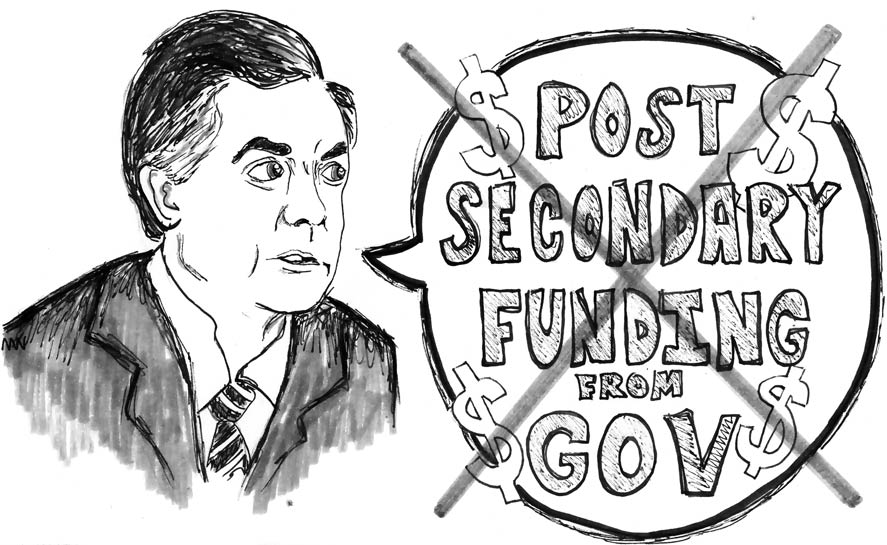
Universities need public funding
Alberta’s budget was, in a way, a pleasant surprise. After weeks of Premier Jim Prentice throwing worst-case scenarios at us, a four per cent cut to post-secondary over the next two years seems manageable.
But just because the cuts aren’t as bad as expected doesn’t mean post-secondary is well off.
The province now plans to ween Alberta’s colleges and universities off provincial funding. The government’s website says they will restructure Campus Alberta — the organization that funds post-secondary — to make schools less reliant on government funding.
A predictable source of funding allows universities to plan years into the future, ensuring there are spaces for students to fill, programs for students to take and buildings for students to study in. A sustainable funding model would use Campus Alberta to deliver consistent amounts of money to universities.
Instead, the government is pushing universities toward the wonderfully unstable world of “alternative sources of funding.” This means universities will rely on increased tuition, along with corporate and private donations.
Prior to the budget’s release, student leaders and opposition politicians defended the inflation-tied tuition cap. Currently, tuition in Alberta can’t rise above the annual rate of inflation. The hike was 2.2 per cent this year, and it was a rational increase to help the university cover costs out of their control.
The government didn’t cut the cap with this budget, but there’s no legislation to stop them in the future. All they have to do is outlast the current cap, which expires in August 2016.
Prentice has spent the last couple months hinting at the end of the tuition cap so universities can make up the money they’re losing from government revenue. But increased tuition won’t be able to fill the whole gap. Universities will need even more money. That’s where corporations come in.
There wasn’t a corporate tax hike, because Prentice ruled one out before issuing the budget. So instead of taxing corporations to ensure sustainable funding, we’re going to see an increase in direct donorship from these corporations to universities.
And the results won’t be a no-strings-attached funding model.
Last year, the Alberta Ingenuity Centre for In-Situ Energy entered into a corporate research deal with the university where a board external to the university decided the budget and direction of university researchers. Under the terms of this deal, corporate donors could withdraw funding if research isn’t favourable to their interests.
Unlike the government, corporations don’t have a mandate to provide services and educate the public. They have a mandate to turn a profit. Universities must remain independent from corporations so we can ensure their research is impartial.
The most alarming part of the budget isn’t that it’s now more expensive to buy Pil cubes and cigarettes. It’s that we don’t know where post-secondary will be in 10 years under Prentice’s plan. His model for funding post-secondary education leads us hurdling towards a world where corporations have their sticky fingers in our research.
We were told the budget would make sure the most vulnerable Albertans aren’t harmed. But if students are being asked to pay more for a post-secondary system just because the government doesn’t want to, that promise isn’t just hollow. It’s an outright lie.
Chris Adams, Gauntlet Editorial Board
